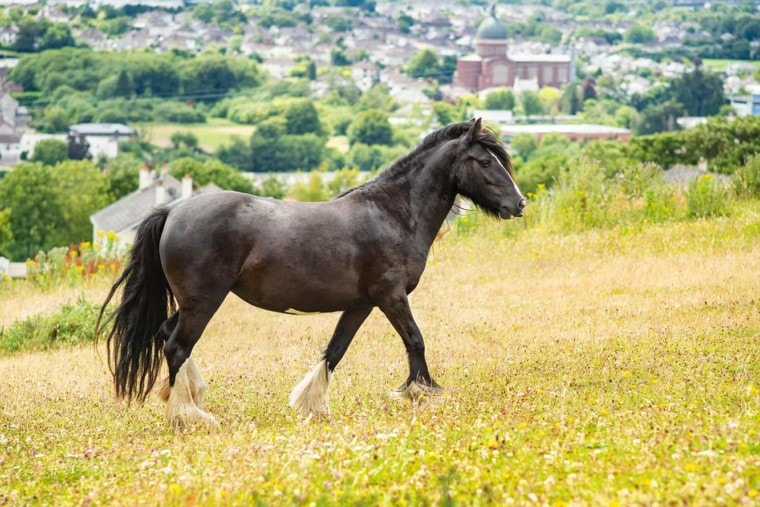
Britain has a long history in which horses of all shapes and sizes served an integral purpose. From large to small, almost every kind of horse that you can imagine comes from breeding programs throughout the centuries on the British Isles.
If you have ever been curious about British horses and their history, we have highlighted 17 British breeds. These include the horses that are still around today, as well as those that have gone extinct over time.
The 17 English Horse Breeds
1. Shetland
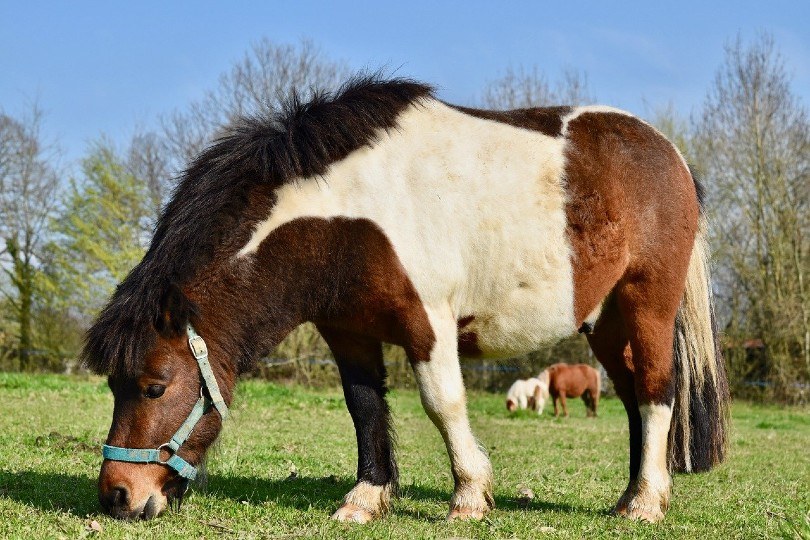
The Shetland pony comes from the British Isles, developed on the Shetland Islands far north, above Scotland. These horses are an integral part of the island’s culture. Queen Victoria boosted their global popularity because she used one as a riding pony.
Shetlands are known for their lack of height and stout, muscular bodies. They stand at an average of 7 to 10.2 hands high. Shetland ponies are used for all kinds of purposes. They are strong and hardy because they come from so far North. They can be driving horses or even racing horses and are often used as a child’s first mount.
2. Connemara

The Connemara, or “Connie”, is arguably one of the most attractive horse breeds on our list. They can come in various colors, but the dappled gray or white varieties of the horse are the most popular. They have become a valuable export out of Ireland, and there are currently spinoff communities of these horses in at least 15 other countries.
The Connemara is an intelligent horse known for their sure-footedness and hardiness. In the Middle Ages, they were crossed with Spanish breeds. This makes them good jumpers and quite valuable as show ponies, especially when crossed with Thoroughbred horses.
3. Welsh Cob

The Welsh Cob is an ancient line of horse that has been used in a wide variety of scenarios and for many working groups. They were first mentioned in 930 by Hywel the Good in his laws. The belief is that they have existed for centuries, originally having evolved from Celtic ponies, which have been found as fossils and dated back to prehistoric times.
The Welsh Cob is actually a pony breed, one of the few that doesn’t have a maximum height set in their breed standard. “Cob” is a word that typically describes a horse that has a rounded or strong build. Welsh Cobs are traditionally thought of as a pony size, but they could be any size.
4. Clydesdale

The Clydesdale is perhaps one of the most well-known horses on this list. They are considered Scotland’s giant, measuring 17 to 19 hands high and weighing up to 2,200 pounds.
Part of the reason that they are so well known is due to Budweiser, who used these horses in many of their commercials starting in the early 2000s. Historically, Clydesdales were the horses that delivered the first case of beer to St. Louis from Anheuser-Busch brewery after prohibition. Regardless of their newfound popularity among the masses, they are categorized as “vulnerable” by the Rare Breeds Survival Trust.
5. Fell
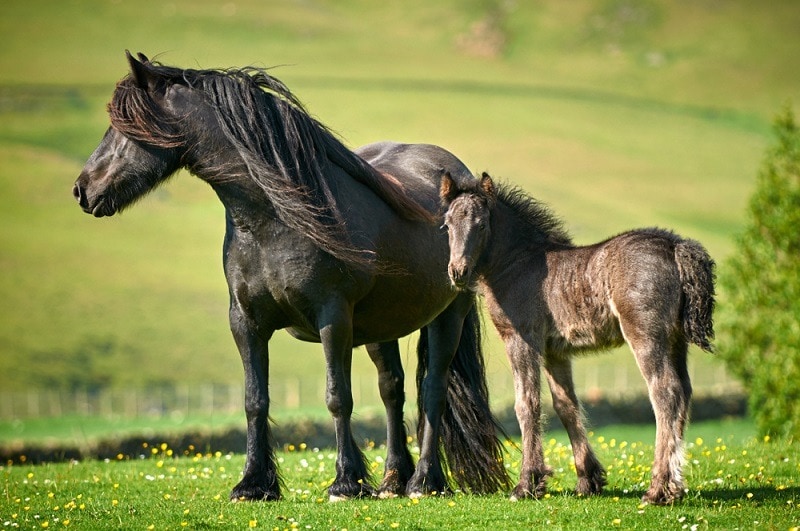
The Fell pony is another horse that has received the “vulnerable” listing because there are currently only 500 to 900 registered females for breeding. They are rugged ponies and are often compared to the Dales pony because they are visually similar. The Fell pony is slightly smaller and often not as strong as the Dales, but they were still an integral asset to the mining industry.
Since the demand for horses that could pull carts or plows has decreased dramatically in the last 200 years, their numbers are meager. In their native U.K., they are still used for shepherding work and forestry. They can even be used as trotting horses because they have quite a bit of stamina packed into their small frames.
6. Eriskay

The Eriskay pony is extremely rare, living on the Western Isle of Eriskay. They are a relatively unknown relative of the much more popular Highland pony. They are smaller and lighter in size and structure, primarily grey and sometimes dappled.
They are currently critically endangered because there are fewer than 300 registered breeding females. The fact that there are any left at all is mostly due to a small group of people on Eriskay. They made a concentrated effort in the 1970s to save the original pony. By the time these breeders came along, there were only 20 Eriskay ponies left. Now there are about 420 globally, with less than half being registered females.
7. Cleveland Bay
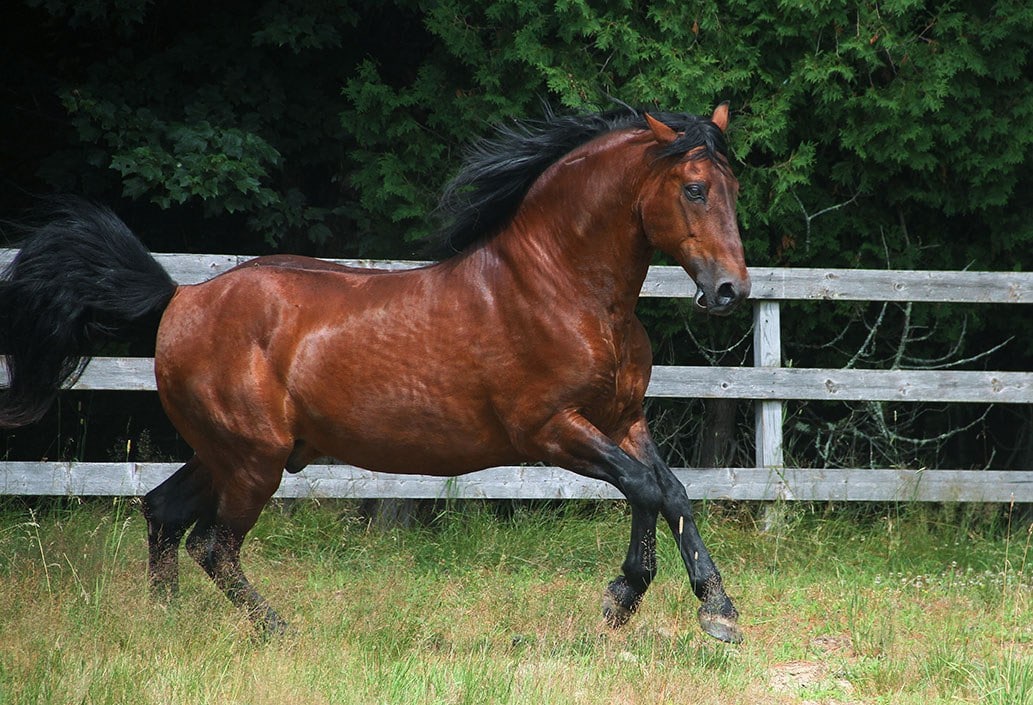
Cleveland Bays were first called Chapman horses because they traveled with a salesman called Chapman. They are now better known as the Cleveland Bay because they were renamed when they became the royal coaching horse for Elizabeth I. Even now, they are still used on stately occasions when needed.
These horses are impressive and regal. They should always be a rich bay color and incredibly strong. At times, Clevelands get mixed with Thoroughbred blood to produce an impressive hunting horse or sports competitor.
8. English Thoroughbred

Speaking of Thoroughbreds, the English Thoroughbred horse is well-known worldwide as one of the most versatile and athletic horses ever bred. Three stallions went into producing this breed, all of them from the Middle East.
The first was a Byerley Turk, imported into Yorkshire and Derbyshire in the 1680s. The next was the Darley Arabian, imported in 1704. The final horse was the Godolphin Arabian in 1729. Together, they formed the roots of an impressive genetic pool. Thoroughbred horses are known for their racing abilities and general showmanship.
9. Highland

The Highland pony is a breed native to Scotland. They are among the largest of the pony breeds known to the mountains or moors of Scotland. The ponies are quite hardy and surefooted, easy to care for compared to other kinds of horses and ponies. They are quite round and chunky, standing between 13 and 14.2 hands high.
The Highland ponies have a distinctive look to them. They are typically a mousey dun or golden color. They have a black stripe, shaped like an eel, that runs from their withers to their rump. Their legs are lined like zebras’ legs. It is believed that this horse came about crossing an Eriskay pony and a heavier breed, like a Clydesdale. From there, it is likely that there is some Arabian, Roadster, and Percheron in their bloodline.
Queen Victoria promoted this breed. She liked to ride them around Balmoral in a stately fashion.
10. Lundy

The Lundy pony was first developed on Lundy Island off North Devon’s shores near the British Channel. Martin Coles Harman led their breeding program in 1928, when the island’s owner bought three dozen New Forest pony mares and bred them with a Welsh Mountain stallion.
Since Lundy Island is quite remote, it was easy enough for the breed to develop independently. Herd control methods had to be put into place because the stallions would often war with each other. Lundy ponies are an excellent option for children’s mounts and are highly rugged and adaptable.
11. Suffolk Punch
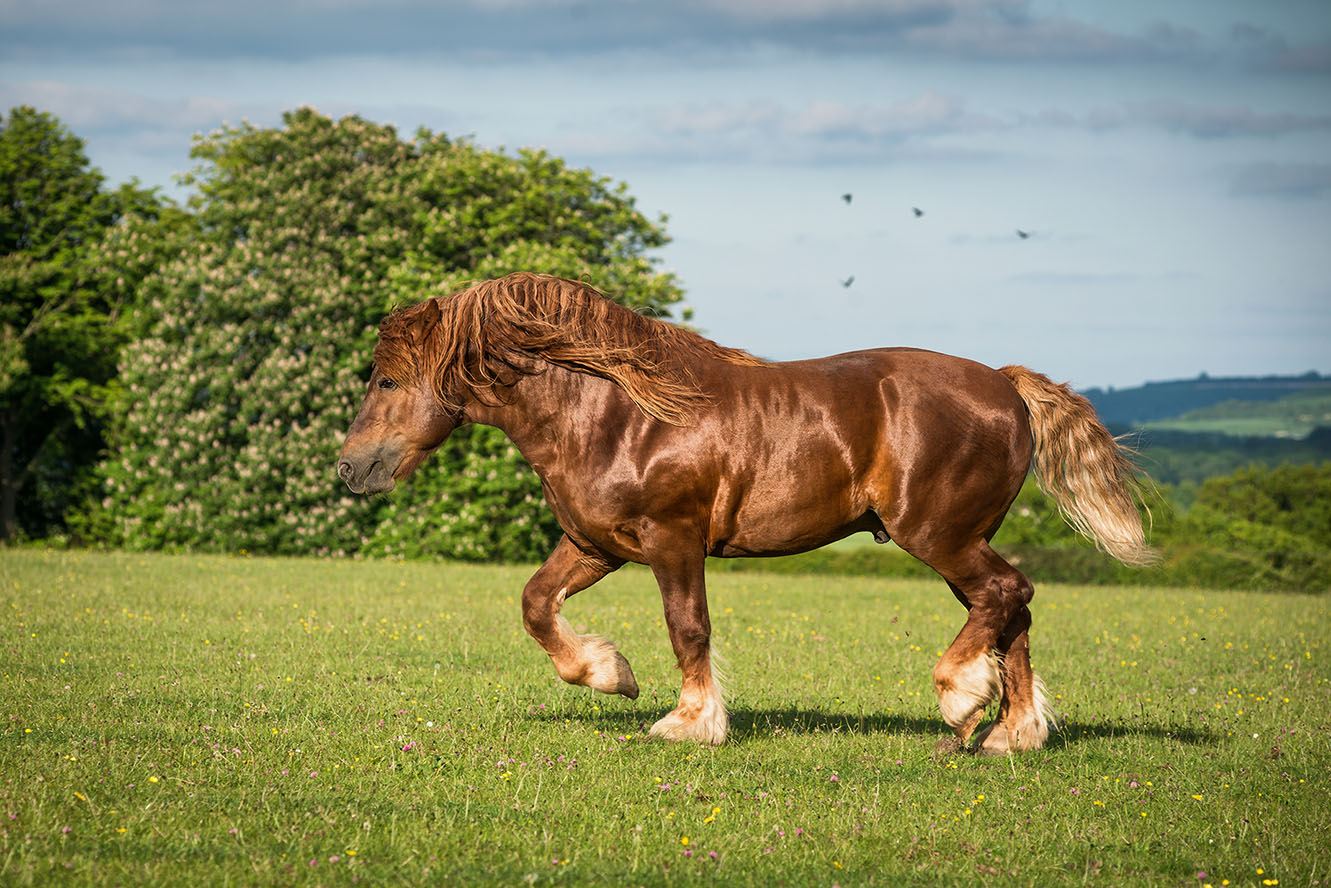
The Suffolk Punch is a heavy-set horse, getting their name from their solidity and strength. They are quite energetic and are considered outstanding working horses. Their conformation was founded in the 16th century and has stayed consistent since their development.
Their uses since then have been plentiful, as they served as heavy draft horses on farms until World War II. During the war, they served as artillery horses, and nowadays, they work in the forestry business within the U.K. They are always chestnut, with white feathers on their forehead.
12. Shire
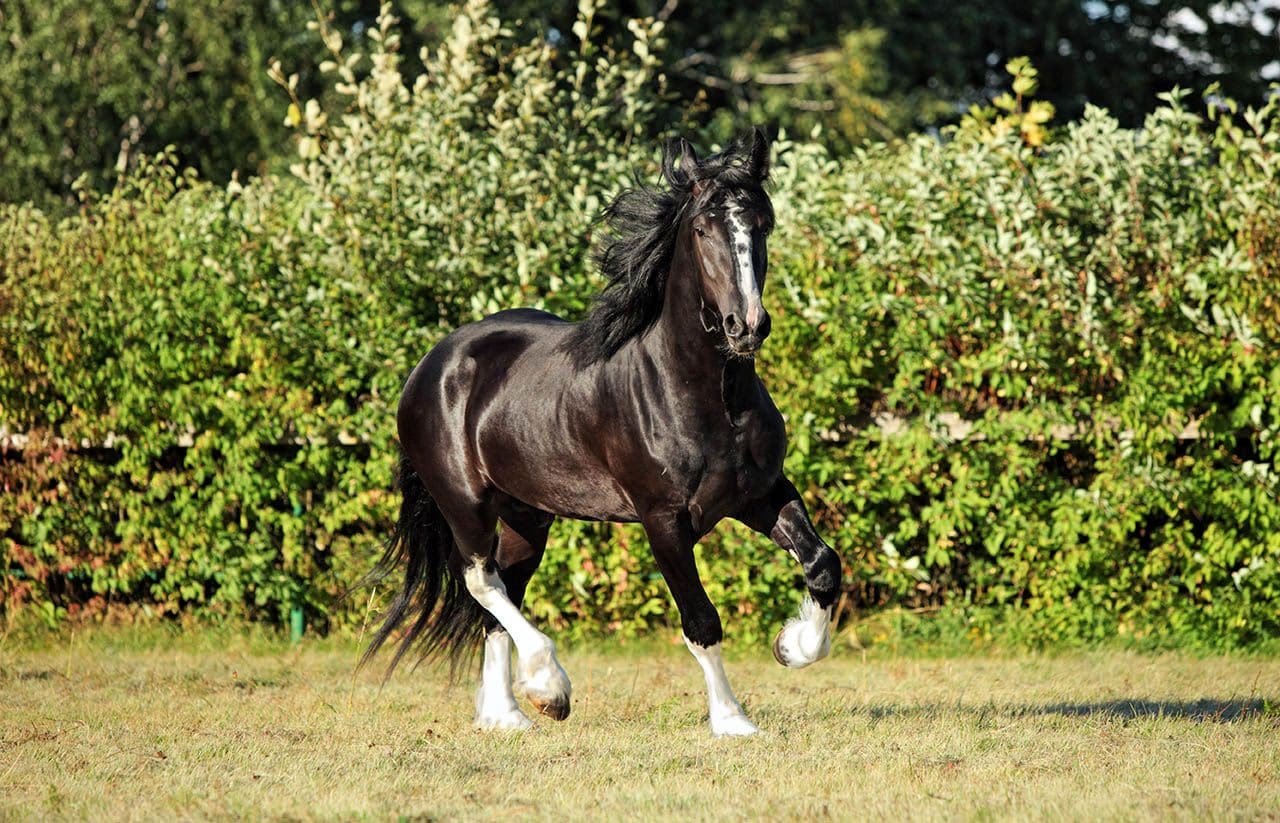
You might think of the Shire as a beautiful place in New Zealand. However, it is also the name of a powerful horse that stands at an average of 17.2 hands high. They were first bred in the 18th century as lighter horses compared to Clydesdales.
The Shire horse was the most useful after 1701, when the seed drill was first invented. This machine required a switch from the typical oxen to horses as agriculture developed. They were then used to pull barges during the Victorian era.
13. Welsh Mountain

The Welsh Mountain horse is Wale’s national pony. They are almost always grey and are typically divided into four categories, or sections, according to their size. Section A ponies have a Disney character-like face with large dark eyes. Sections C and D are cobs and cob-type ponies, respectively.
Almost all these horses were wiped out by Henry VIII when he decreed that wild ponies that were too small for war should be culled because they were a nuisance to farmers. It wasn’t until the 18th century that communities across Wales realized that the Welsh Mountain pony was a commodity and began to breed and export them.
14. Dales
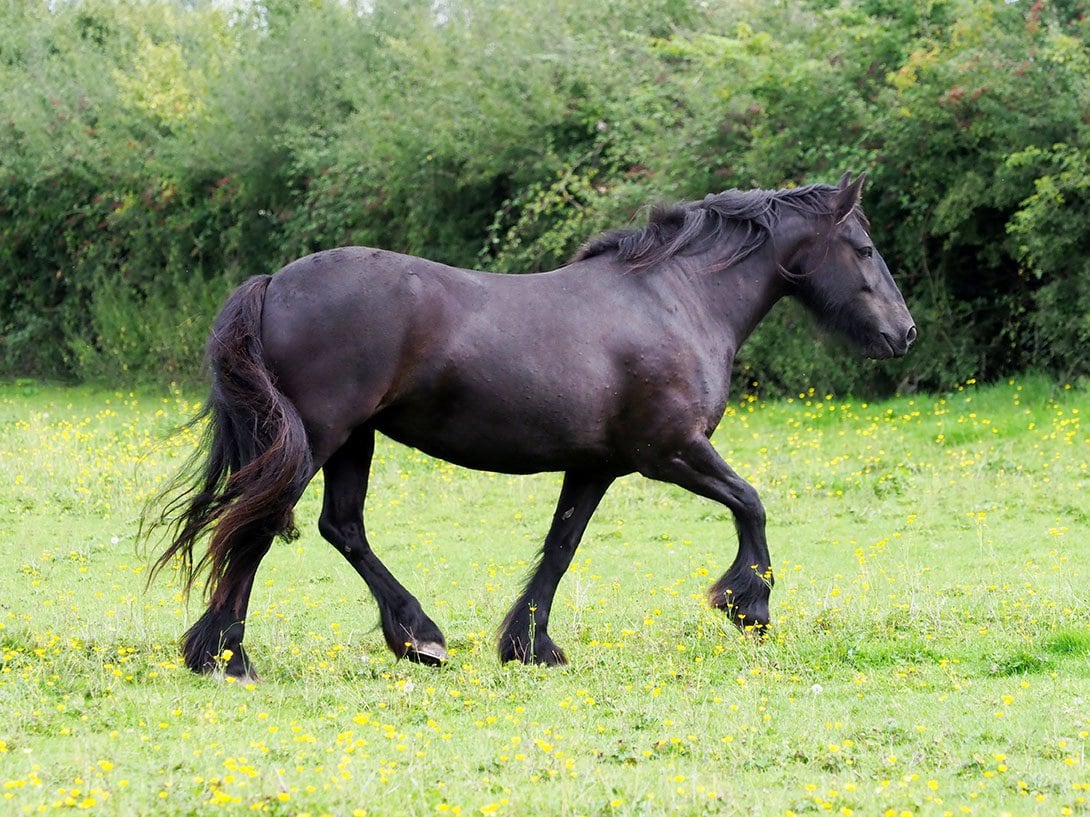
The Dales pony is similar to the Fell pony. They are a deep black shade and were first developed in the Dales in England. They are quite a bit stronger and larger than Fell ponies, and they were both used in the mining industry. Dales are native to Britain and were a working pony when they were first domesticated from their feral roots.
The Dales pony has incredible stamina and plenty of courage to go with it. The Brits used them extensively during both World Wars, but now they have fallen from grace. They are currently listed as critically endangered, with fewer than 300 breeding mares left.
15. Hackney
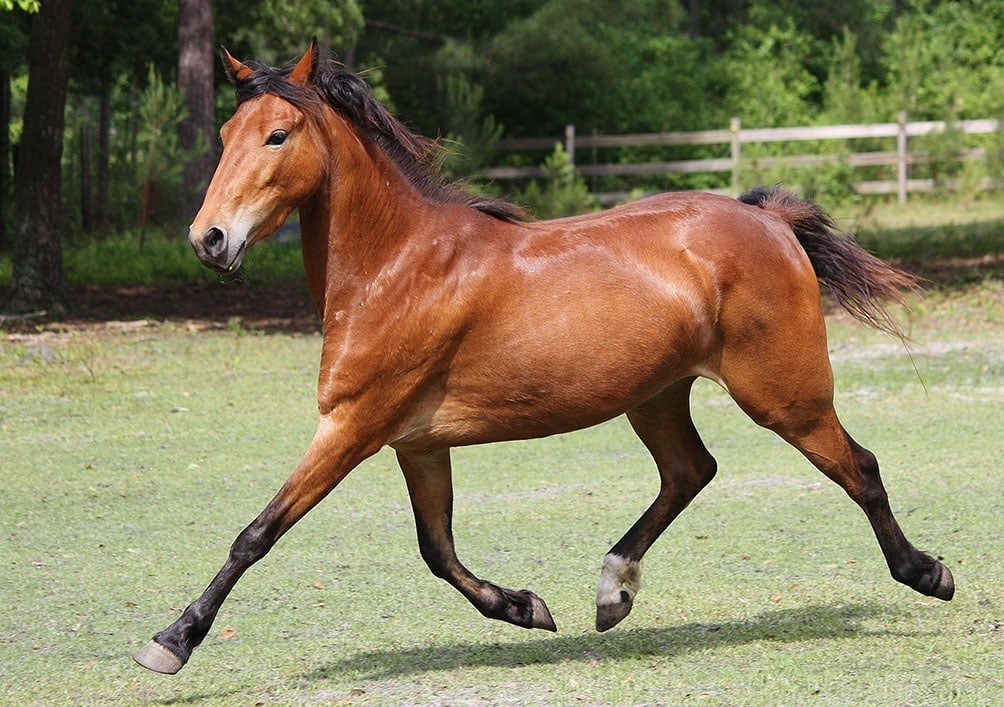
The Hackney Horse is a British breed that is critically endangered. They were first developed in the 14th century and hit their stride as a carriage driver. They are elegant horses known for their high-stepping gait and harness strength. However, as with many breeds, the Hackney horse began to decline in the 20th century as carriages and horses were replaced by vehicles and trains.
16. Exmoor
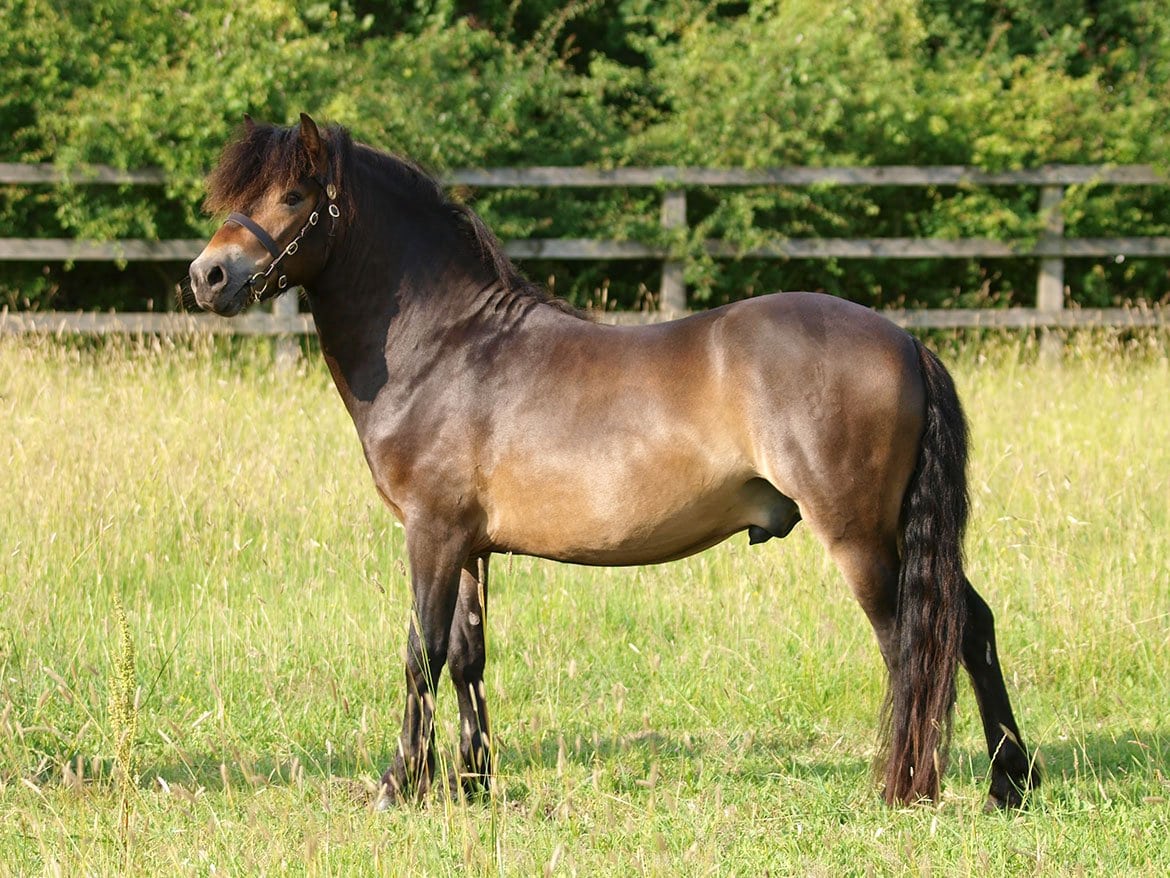
The Exmoor Pony is another pony breed that is native to Great Britain. They were a semi-feral breed living around the region of Devon and Somerset. Interestingly, the Exmoor pony seems to be more closely related to horses found in ancient Alaska than the Dartmoor ponies that live “next door” to them in the wild. They have a distinctive jaw structure with a 7th molar, which no other living horse breed has today.
The Exmoor pony is currently listed as endangered, but many conservation groups are working to bring such a unique horse back from the brink. Their populations were sorely jeopardized in World War II, but there are currently 11 herds that run wild on the moors, including two owned by the Exmoor National Park Authority working to preserve their gene pool.
17. Dartmoor

There are few pureblood Dartmoor ponies left. They are beautiful black ponies that are considered quality riding animal children. The breed society has an incredibly strict registration and stallion-grading procedure so the true breed can be maintained.
The Dartmoor Pony is one of the hardiest breeds in the world. They are a semi-feral breed often left to graze around the moors. They have alert ears and wide-set eyes. There are only about 800 of these ponies left, even though they have been around since 3500 B.C.
Final Thoughts
There you have it! Here are the most beautiful British horse breeds. Have you seen any of these breeds? Which one did you think was the most striking? Let us know in the comments.
Featured Image Credit: Algirdas Gelazius, Shutterstock







